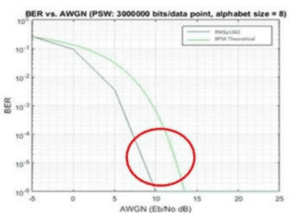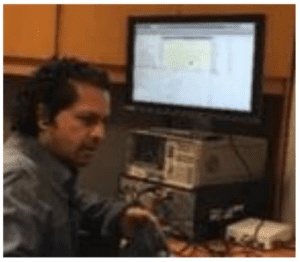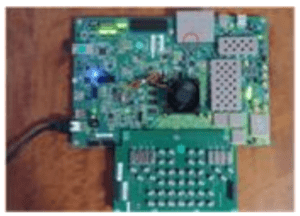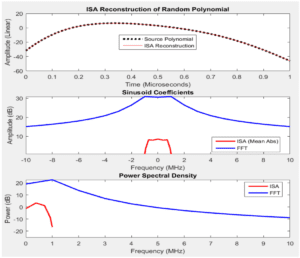
Introduction
Astrapi® is a pre-product company that will transform the core technology for the multi-trillion-dollar telecommunications industry. By introducing a fundamentally new form of signal modulation, called ‘Spiral Modulation’, Astrapi has opened the door to pushing spectral efficiency far beyond what was previously viewed as the theoretical limit. This can provide 2X or greater improvements in occupied bandwidth, data throughput, signal power requirements, or any combination of these benefits. It can also reduce latency. Astrapi is supported by $2.8 million in private and institutional investment, as well as over $1 million committed by the National Science Foundation (NSF), with additional funding from the U.S. Air Force.
Astrapi seeks to strengthen technology partnerships across telecommunications sectors, including but not limited to satellite, terrestrial backhaul, smart devices, and Internet of Things (IoT) sensors.
How It Works
Based on a new generalization of Euler’s formula, the
foundational mathematics for the telecommunications
industry, Astrapi has the ability to construct signals from the sum of complex spirals. This unleashed, for the first time, the ability to fully exploit the capabilities of a continuously non-stationary spectrum. Classical channel capacity theory contains, in the proof of the sampling theorem, an implicit assumption that the spectrum is at least approximately stationary. By violating this assumption, Spiral Modulation creates the opportunity to exceed the Shannon Hartley law, the previous upper limit
for spectral efficiency for communication efficiency. A recent peer-reviewed journal article on our technology: https://jcis.sbrt.org.br/jcis/article/view/571
Software Platform
Astrapi has a MATLAB®-based toolkit in place for designing spiral-based signals. This supports measuring performance in terms of bit error rate (BER) vs. channel impairment, and in terms of occupied bandwidth (OBW). Astrapi has a software swept-tuned spectrum analyzer, which has been validated against a hardware swept-tuned spectrum analyzer, that is suitable for measuring the OBW of a non-stationary spectrum.
Hardware Platform
Astrapi has a single-channel Ettus N210 Software Defined Radio (SDR)  implementation of spiral modulation in place, demonstrating modulation, synchronization, and demodulation, but not in real-time. These results have been validated by the Southwest Research Institute (SwRI). We are now beginning work on our 2nd generation
implementation of spiral modulation in place, demonstrating modulation, synchronization, and demodulation, but not in real-time. These results have been validated by the Southwest Research Institute (SwRI). We are now beginning work on our 2nd generation  SDR using a Xilinx® Zynq® UtraScale+™ RF SoC stand-alone 5-channel real-time implementation that will fully enable the capabilities of Spiral Modulation.
SDR using a Xilinx® Zynq® UtraScale+™ RF SoC stand-alone 5-channel real-time implementation that will fully enable the capabilities of Spiral Modulation.
Development Stage and Schedule
Astrapi is currently at Technology Readiness Level (TRL) 4. We anticipate an end-to-end Xilinx® Zynq® UtraScale+™ RF SoC, real-time 5-channel SDR implementation of Spiral Modulation by late 2019 or early 2020. Additional investor or project funding enables us to accelerate these efforts.
Intellectual Property
Astrapi has ten foundational patents issued in the U.S. that control the field of Spiral Modulation well into the 2030’s, with more pending. Astrapi also has international Patent Cooperation Treaty Coverage in over a dozen countries, providing worldwide protection on this technology. Because of its deep theoretical roots, Spiral Modulation is the unique method to fully exploit a continuously non-stationary spectrum, and thus create a greenfield for IPR development.
Comparison to Transmission with Constant Amplitude Sinusoids The below diagram shows that Astrapi’s Instantaneous Spectral Analysis (ISA) technology can construct and transmit waveforms while putting power into a much smaller range of frequencies than was previously thought possible, by using sums of sinusoids with continuously-varying amplitude.

Astrapi Corporation
100 Crescent Court, Suite 700
Dallas, TX 75201
